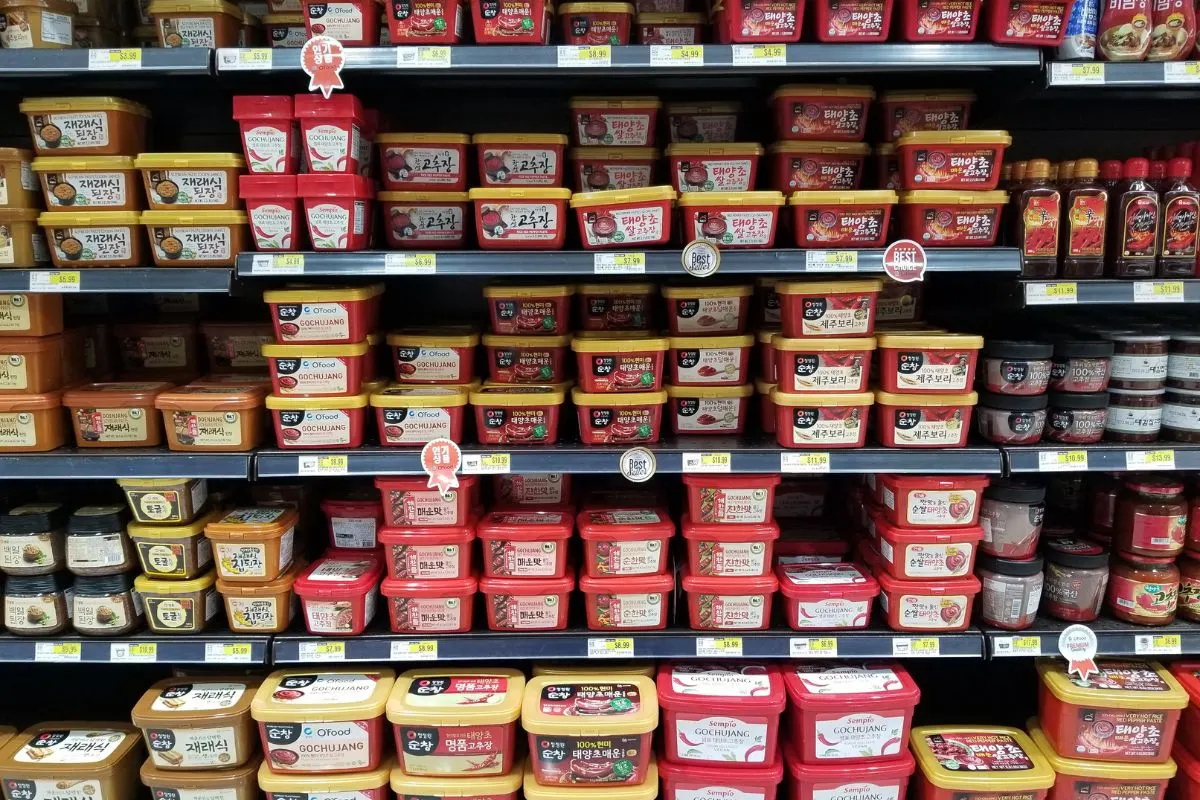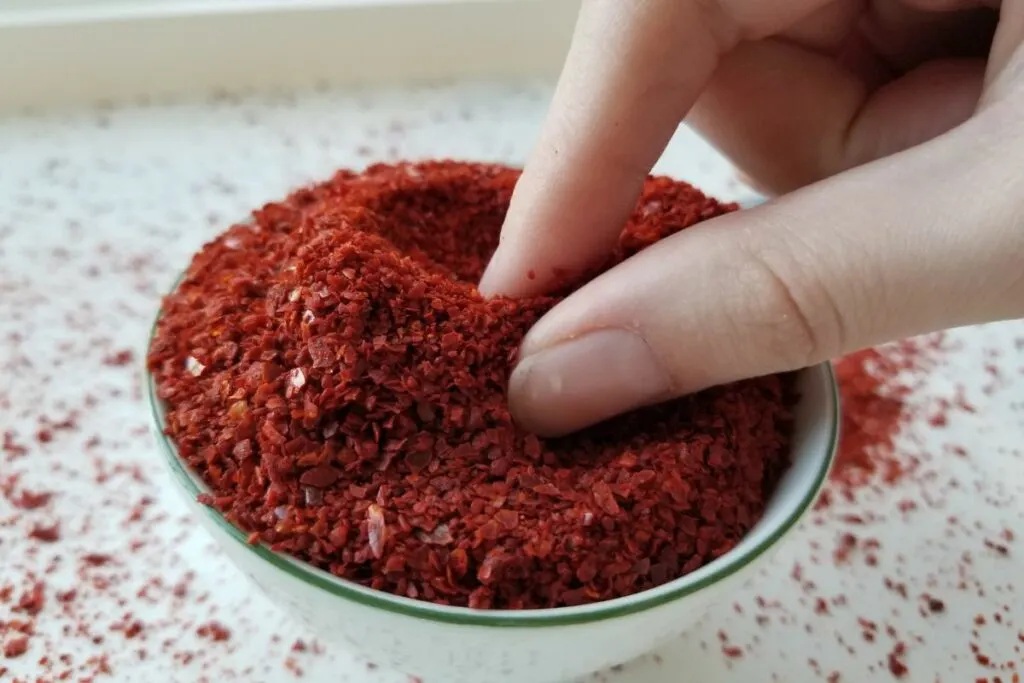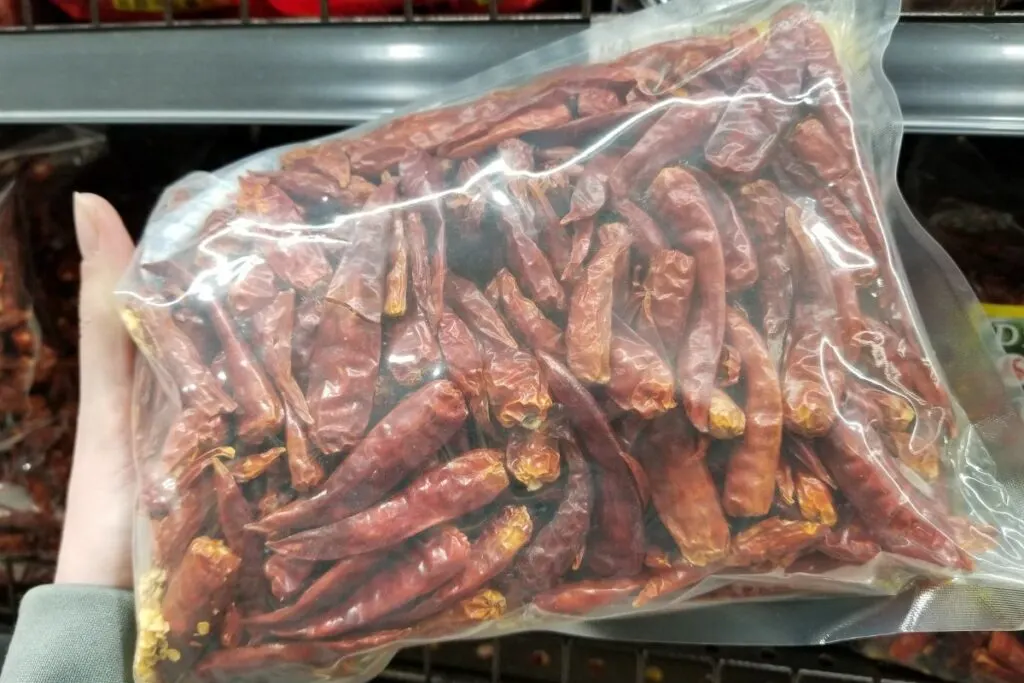Ever had unforgettable kimchi or craved a bowl of bibimbap? A a dollop of Gochujang or gochugaru is a must in either dish. But what if you don’t have the ingredients to make these delicious Korean foods? Well, I’ve got some tried and tested substitutes for gochugaru and gochujang that you’ll wanna have. Gochujang substitutes can be harder to find, but I’ve also got some flavor power combos just for you to try.
You can substitute gochugaru and gochujang with cayenne peppers, chipotle powder, Doenjang + Gochugaru, and Sriracha + Tomato Paste. But this isn’t all, as I’ve got a load more! So, let’s hop right in!

Jump To
🤷♀️ What is Gochugaru?
Gochugaru is a coarsely ground red pepper powder made from sun-dried Korean chili peppers. These vibrant Korean red pepper flakes or powder is responsible for the bright red orange hue in kimchi. It’s also used to lend mild, moderate heat in banchan (Korean side dishes), sugar-free salads, marinades, stews and so much more. Gochugaru is the primary ingredient in making another well-loved condiment in hansik – gochujang.
🤷 What is Gochujang?
Gochujang, also known as Korean fermented red chili pepper paste, are made from gochugaru, fermented soy bean powder (called mejugaru), glutinous rice powder, and salt. The deep, rich, sweet, salty, spicy flavor of gochujang comes from its fermentation process. During the process, the paste is stored in clay pots and aged in full sun, lasting from three to six months.
📌 Gochugaru Heat Level: Introducing Scoville
Gochugaru itself typically has a rating of between 1,500 and 10,000 Scoville’s, with the spiciest variety, cheongyangkochu, measuring at 3,000 Scoville’s. These peppers are botanically classified as Capsicum annum, along with Hungarian peppers, Sichuan peppers, Italian peppers and Greek peppers. The spiciest variety is known as maewoon gochugaru, while the least spicy one is called deolmaewoon gochugaru.

💡 Best Gochugaru Substitutes
Cayenne Pepper
The first on the list is this cayenne pepper because it’s also sometimes used in Korean cuisine. It’s the most similar to gochugaru in terms of taste and texture. In particular, cayenne pepper flakes (sans the seeds) are most similar to gochugaru flakes in flavor, texture and color. Take caution when substituting cayenne pepper as it ranks at 30,000-50,000 SHU on the Scoville scale. You can substitute roughly 3⁄4 teaspoon of cayenne for one teaspoon of gochugaru.
Chipotle Powder
A Chipotle powder substitute is just the trick for gochugaru. They produce a spicy, smoky taste with a tinge of sweetness. A great flavor substitute for gochugaru. Much like cayenne, it’s a close substitute for gochugaru in terms of flavor, heat, and texture. It has a Scoville rating of 2,500 – 8,000 SHU, falling within the heat ranking of gochugaru. It has a deeper and smokier flavor than gochugaru, but you can still use equal parts chipotle powder to gochugaru.

Red Pepper Flakes + Paprika
Red pepper flakes are a mix of peppers, like jalapeno, bell pepper, cayenne, Fresno, and Anaheim peppers, offering a good balance of heat, color, and texture. These form a good substitute for gochugaru when mixed with equal parts paprika. A Paprika alternative is your best shot at a gochugaru swap. Its base is dried, ground red peppers and varies in taste from sweet and mildly hot to very spicy. Paprika will add that energetic color and sweet, peppery flavor to the dish, so grind up the red pepper flakes and mix them with equal parts paprika.
💡 Best Gochujang Substitutes
Doenjang + Gochugaru
The best substitute for gochujang is doenjang (Korean fermented bean paste) mixed with gochugaru. Doenjang is Korean fermented soy bean paste, and already contains the umami-like goodness that gochujang offers. All that’s left is to adjust the spice level and sweetness with gochugaru and sugar (or other sweeteners like honey, maple syrup, or agave). If you don’t have doenjang, you can use some doenjang substitutes for an equally tasty experience.
Miso Paste + Gochugaru
Swapping Miso paste for gochujang will do just the trick. It’s made from fermented soybeans, salt and koji. A staple ingredient in Japanese cuisine, offering savory, umami like flavors to dishes. To bring it to the level of gochujang, combine miso paste, gochugaru (or any of the gochugaru alternatives listed above), salt and sugar (or sweetener of choice). You can use use some maple syrup substitutes if you don’t have any other sweeteners lying around.

Sriracha + Tomato Paste
This Sriracha alternative for gochujang is a kind of hot sauce made from sun-ripened chilis turned into chili pepper paste. The sauce is moderately spicy, getting its heat from jalapenos. Tomato Paste is a thick paste made from stewing tomatoes and then reducing them. Its concentrated, almost meaty taste will be perfect for combining with sriracha. To create this gochujang replacement, simply emulsify sriracha with tomato paste and season with salt and sugar to taste.
🧐 FAQs
Gochugaru has a vibrant and slightly smoky flavor with a medium level of heat. It also offers a subtle sweetness, making it a versatile ingredient in Korean cuisine.
Gochugaru is not the same as generic chili powder commonly found in Western cuisine. Gochugaru is specifically made from Korean red chili peppers and has a unique flavor profile, while chili powder can vary widely in ingredients and heat level.
Gochugaru is moderately spicy, typically offering a medium level of heat. Its spiciness can vary depending on the specific variety of chili peppers used and individual tolerance levels, but it generally provides a manageable level of spiciness for most people.
While it’s generally not recommended, there is no hard rule that says gochugaru can’t be substituted for Gochujang. Though the flavor and texture will be different, you can adjust the other ingredients in the recipe to compensate for the differences in flavor and consistency.
